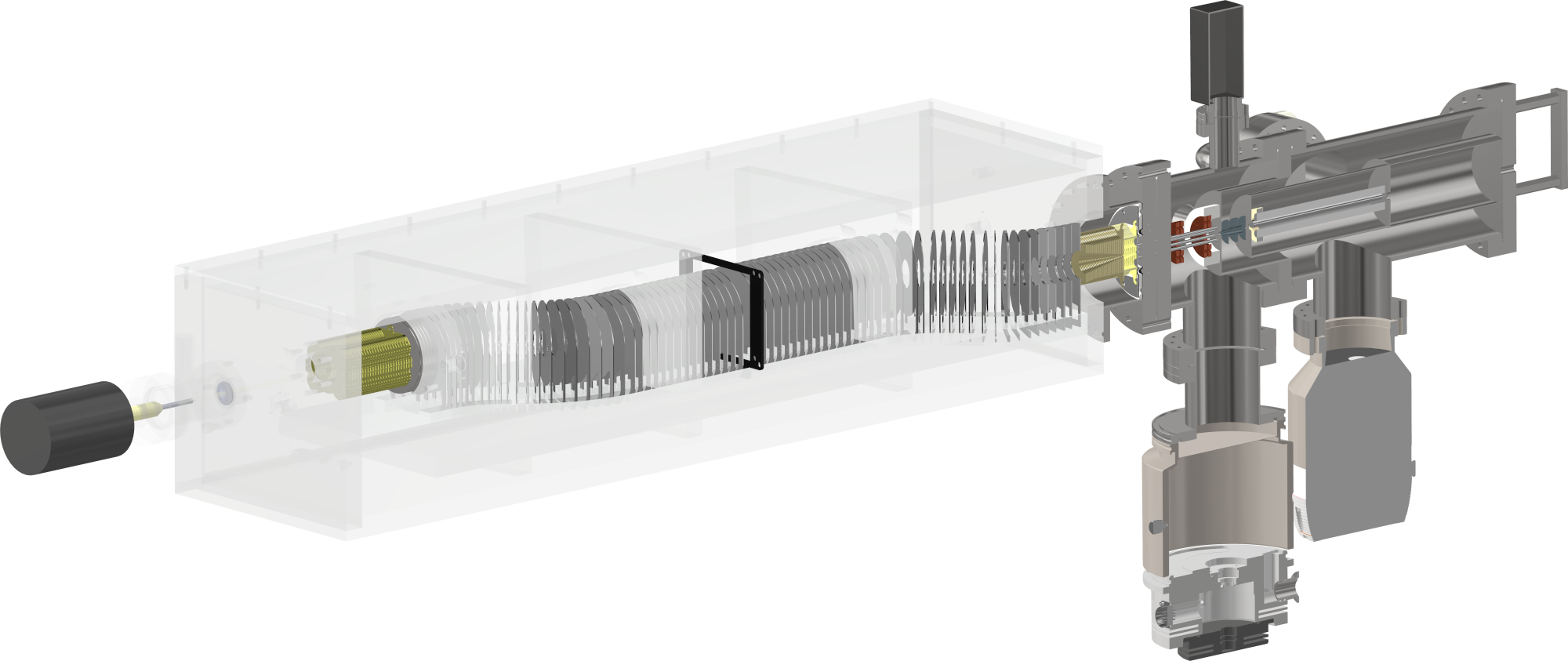The PASTA (Photoinduced Action Spectroscopy Targeting Anions) instrument at UEA, shown to the left, was developed by the Bull group with support from an EPSRC New Investigator Award. At present, PASTA is interfaced with an EKSPLA NT-342B OPO laser system and a Continuum Surelite Nd:YAG with 532/355 nm generation crystals. We are actively looking to expand the laser options.
The PASTA instrument utilises tandem ion mobility spectrometry, quadrupole ion trapping, time-of-flight mass spectrometry, and orthogonal photoelectron velocity-map imaging. It was constructed using standard 6 in. and 2-3/4 in. ConFlat flanges and the use of 3D printable mounts and holders, allows the instrument to be adapted easily to incorporate a variety of ion sources or additional sectors as applications demand.
PASTA was developed with the following responsibilities:
● Coupling with electrospray ionisation, tandem ion mobility spectrometry, and ion trapping, allowing for photoisomerisation action spectroscopy, isomer-specific photodetachment and photoelectron spectroscopies (in both frequency and femto- to picosecond time domains), and photogeneration, separation, and study of transient intermediates that survive for a few milliseconds or longer.● Capabilities to perform both photodetachment (resolution limited by laser bandwidth) and photoelectron spectroscopies on anions and to record photoelectron spectra simultaneously when acquiring a photodetachment spectrum (i.e., frequency-resolved photoelectron spectroscopy).
● The versatility to generate ions from easily interchangeable hard- and soft-plasma pulsed valve sources for astrochemical applications. Using these pulsed-valve sources, the instrument should be capable of studying small anions (a few atoms) to moderately sized anions (≈60 atoms) through time-of-flight mass spectrometry.
● Velocity-map imaging detection to acquire electron kinetic energies without discrimination effects and to record angular information about photoelectrons.
● The capacity to disentangle prompt and delayed (e.g., thermionic emission) signals in both photoelectron and photodetachment spectra by time-gating the photoelectron detector (≈5 ns time resolution) relative to the laser.


